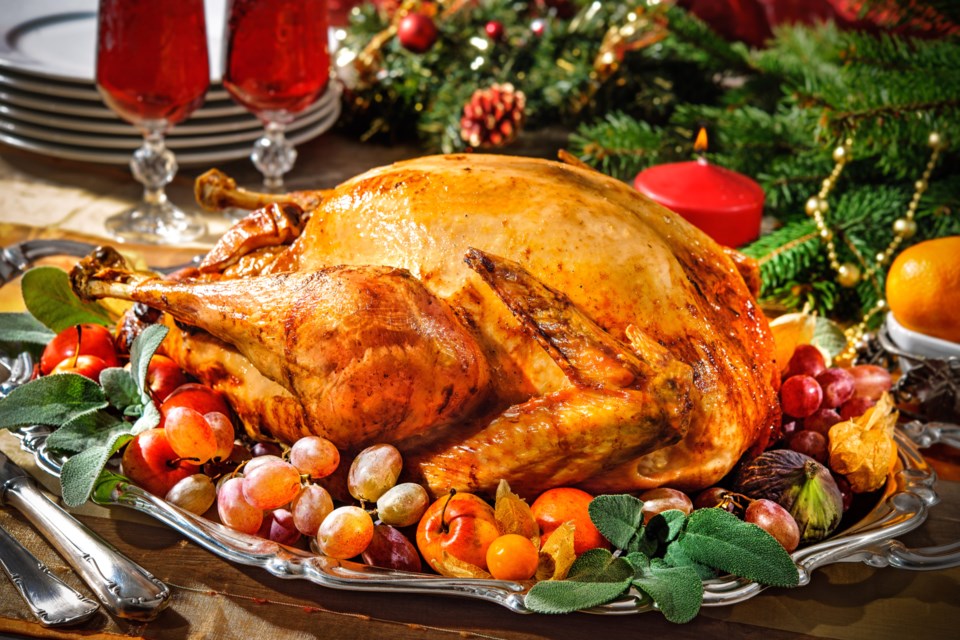If you celebrate Christmas and are a fan of food, then you’re probably looking forward to some great marathon eating this season. Although the Christmas dinner feast has been around since the Middle Ages, our modern Christmas traditions were popularized in Victorian Britain. Here in the New World, the main dish of choice is the native Meleagris gallopavo: the humble turkey.
Originally hailing from Mexico (not Turkey) these feathered friends have been around for 10 million years (true story, their fossils have been found to prove this).
Back in the 1930s, it took a week’s wages to be able to buy a turkey, but thankfully that’s not the case anymore. Up until about the ‘50s, turkey was a luxury for most families.
However, before our noble turkey took over and became popular as a main Christmas dish, a veritable menagerie of birds were roasted in its place, including goose, duck, cockerel (or capon), or if you were well off, you were chowing down on peacock and swan.
The turkey made the trip across the Atlantic to Europe in the 16th Century, and by the 1800s, it became the Christmas dish of choice for not the wealthy, but the working class as well, when it was quickly discovered that turkeys were relatively inexpensive and quick to fatten.
If you are going to choose a turkey for your holiday dinner this season, be sure to do right by nature and choose a local, sustainable and fresh turkey. Enjoy getting a great dose of protein, iron, zinc and potassium by choosing the healthiest bird money can buy.
Tips on cooking the perfect Turkey
Get the right size
To buy the right size of turkey to feed the number of guests that you are having, you want a turkey that’s at least 1.5 pounds for every guest. For example, to feed eight people, you’ll need a turkey that’s a minimum of 12 pounds.
Brine your turkey
This will keep it juicy and moist. Soak your turkey overnight in a solution of salt, water and spices of your choice and reap the benefits after cooking.
Cook for right amount of time
Rule of thumb is that you should cook it for 13 minutes per pound at 350 F. There are lots of charts online that will help to guide you through your cooking adventure. I think the main point is, although turkey takes a while to cook, you don’t need to start it at the crack of dawn, but do plan ahead.
Basting
I have read a lot of contradicting information on this subject, so I will give you my own advice from personal experience. For a nice moist turkey, baste, baste, baste. I personally baste every 20-30 min. Turkey has been great every time!
Meat Thermometer
Investing in a meat thermometer is a game changer people. You will be able to tell when it’s ready without butchering your meat before displaying it, way easier than eyeing it out.
Recipe: Gluten-free stuffing
Ingredients:
• 5 cups chopped gluten-free bread
• 2 medium onions, chopped
• 3 celery, chopped
• 4 cloves crushed garlic
• 3 diced carrots
• 2 tsp sage
• 2 tsp oregano
• 2 tsp thyme
• ½ cup white wine
• 1 cup broth
• ¼ cup fresh parsley
• 4 tsp butter
• Sea salt and pepper to taste
Directions:
• Preheat the oven to 300 F.
• Spread bread on a baking sheet. Bake, until dried and golden brown about 20 minutes, stirring occasionally. Let cool. Increase the oven temperature to 325 F.
• In a medium skillet, melt butter over medium heat. Add shallots, onions, celery and carrots and cook until soft and golden brown.
• Add oregano, sage, thyme, salt and pepper and cook over medium heat for two minutes. Add wine and continue to cook until liquid is reduced by half.
• Lightly coat a baking dish with olive oil or butter.
• In a large bowl, combine vegetable mixture with bread cubes, chicken broth and parsley. Transfer to baking dish and bake until golden brown, about 30 minutes.



